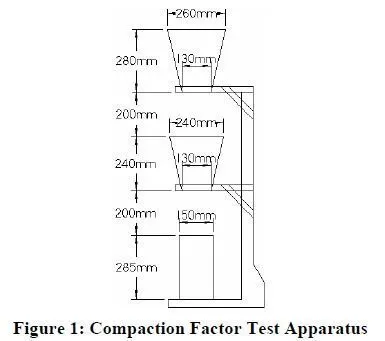The Thaulow concrete tester (Powers 1968; Scanlon 1994; Wong et al. 2000) is similar to the Vebe consistometer and the Powers remolding test, but is modified to allow for the measurement of concretes with higher workability.
The apparatus consists of a 10 liter cylinder of smaller diameter than the containers used in the Vebe consistometer and the Powers remolding test. The cylinder is attached to a drop table. A handle is mounted with pins at the top of the cylinder. A mark on the cylinder at 5 liters assists in determining the end of the test. Concrete is placed in the cylinder using the standard slump cone. For concretes with moderate workability, the handle is allowed to fall from its vertical position and strike opposite sides of the container until the concrete remolds to the 5 liter mark on the container. For low slump concretes, the number of drops of the table required to remold the sample to the 5 liter mark is recorded.
The Thaulow concrete tester is applicable mainly to low slump concrete. ACI Committee 211 (2002) has recommended using the Thaulow concrete tester for concretes that are too dry to be measured with the slump cone.
Advantages:
The Thaulow concrete tester is a dynamic test method.
The handle attached to the cylinder allows for the measurement of concretes with higher workability than can be measured with the Vebe consistometer and the Powers remolding
test.
Test results are obtained directly.
Disadvantages:
The drop table must be mounted on an object of sufficient mass to absorb vibrations
created by the drop table. Accordingly, the device is likely to be too large and bulky for field use.
No analytical treatment or experimental testing of the test device has been performed to relate the test results to yield stress and/or plastic viscosity.
